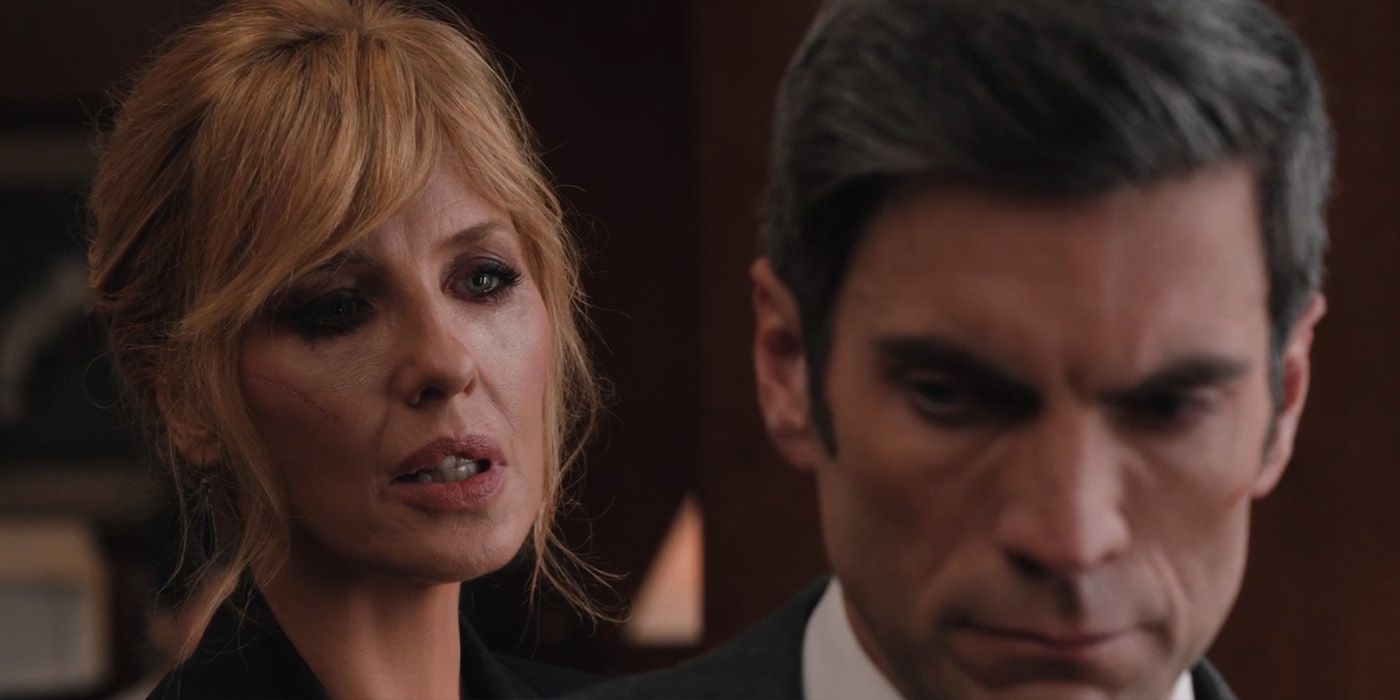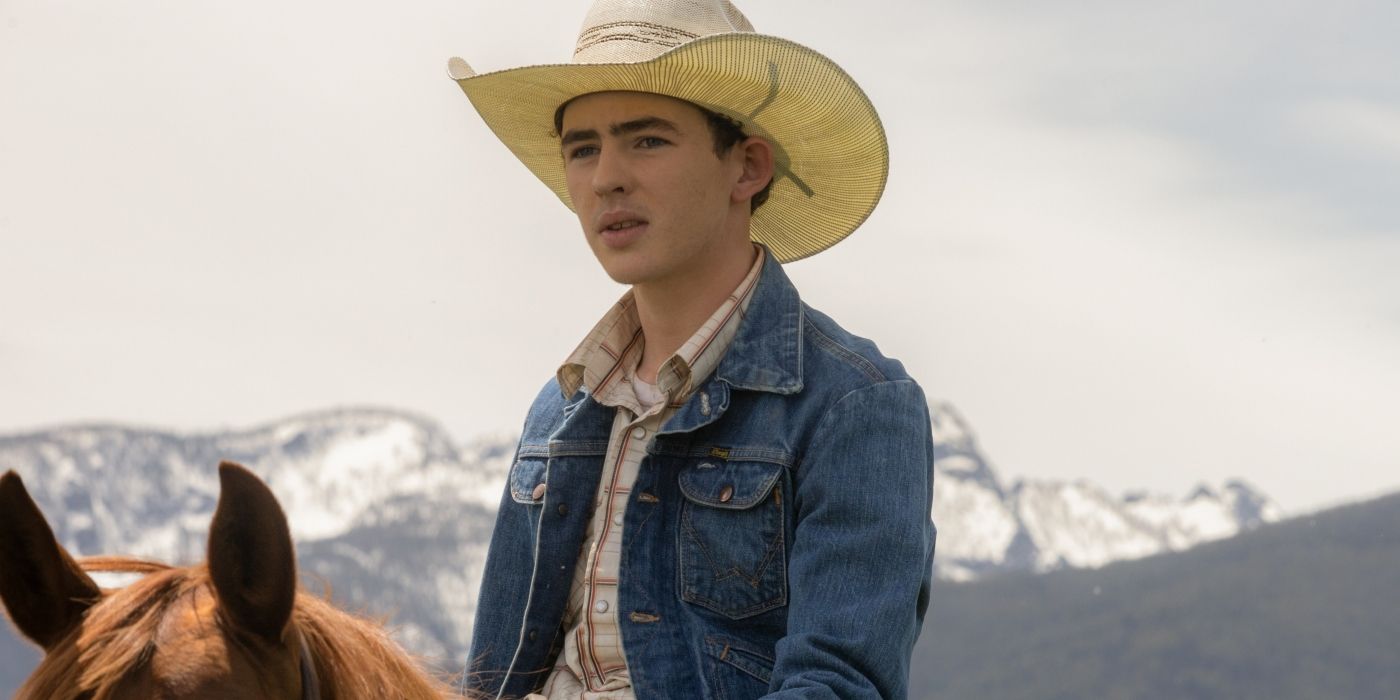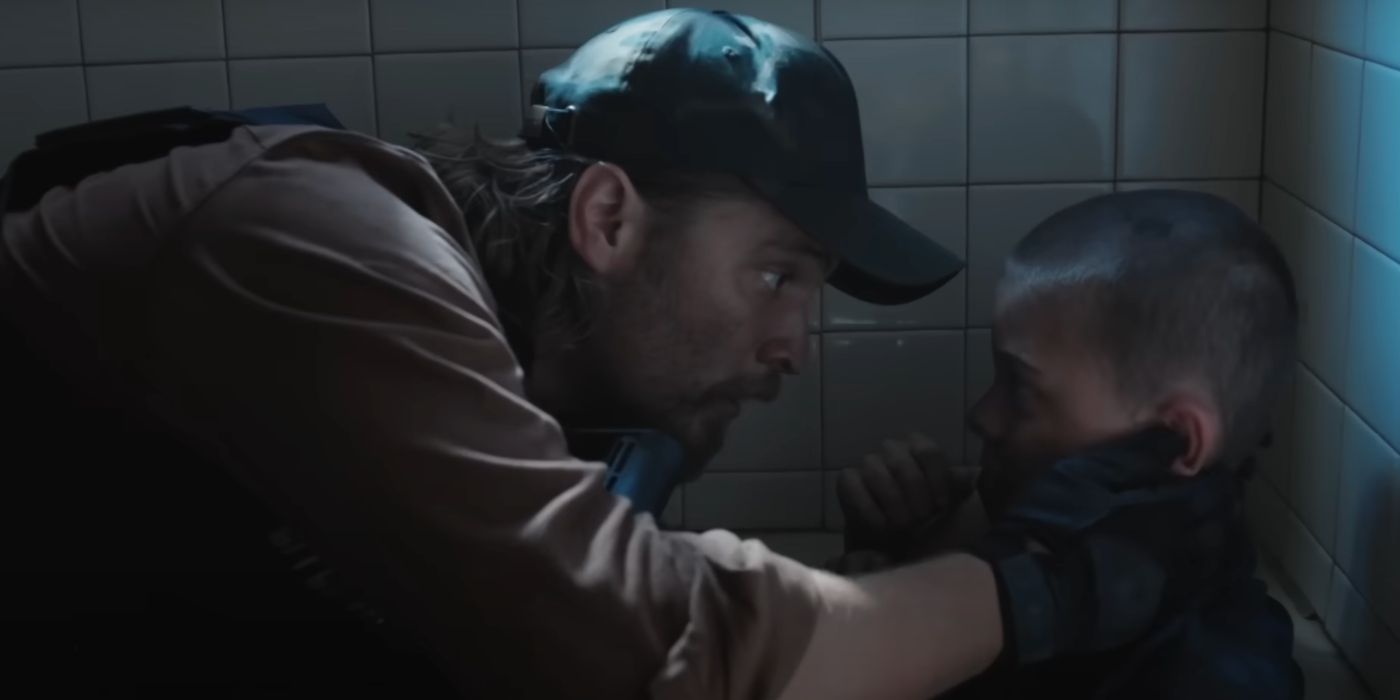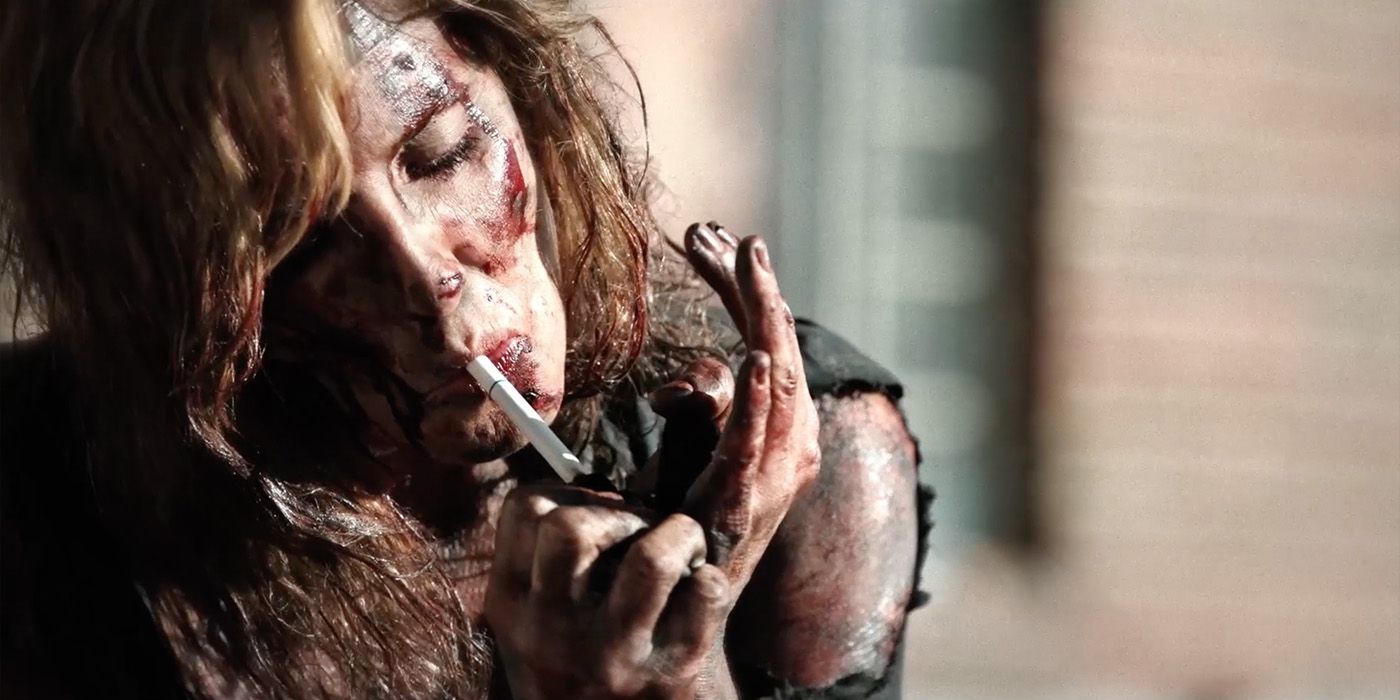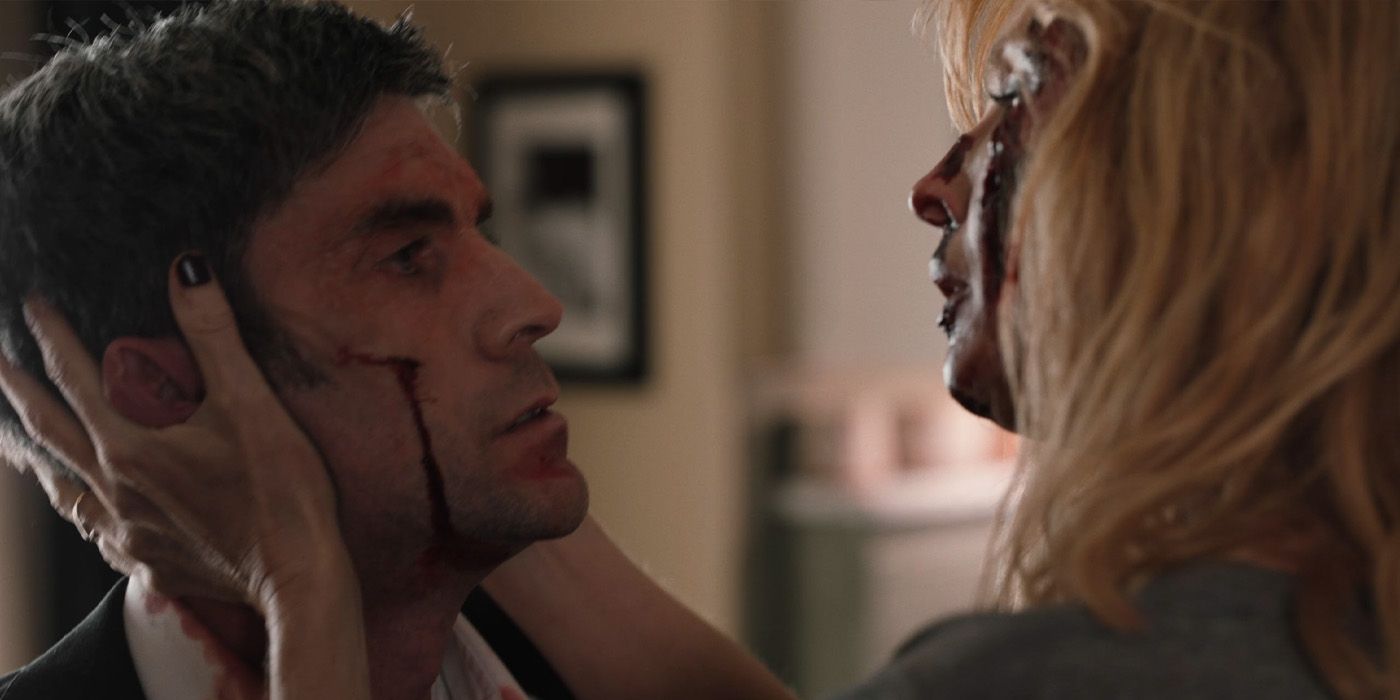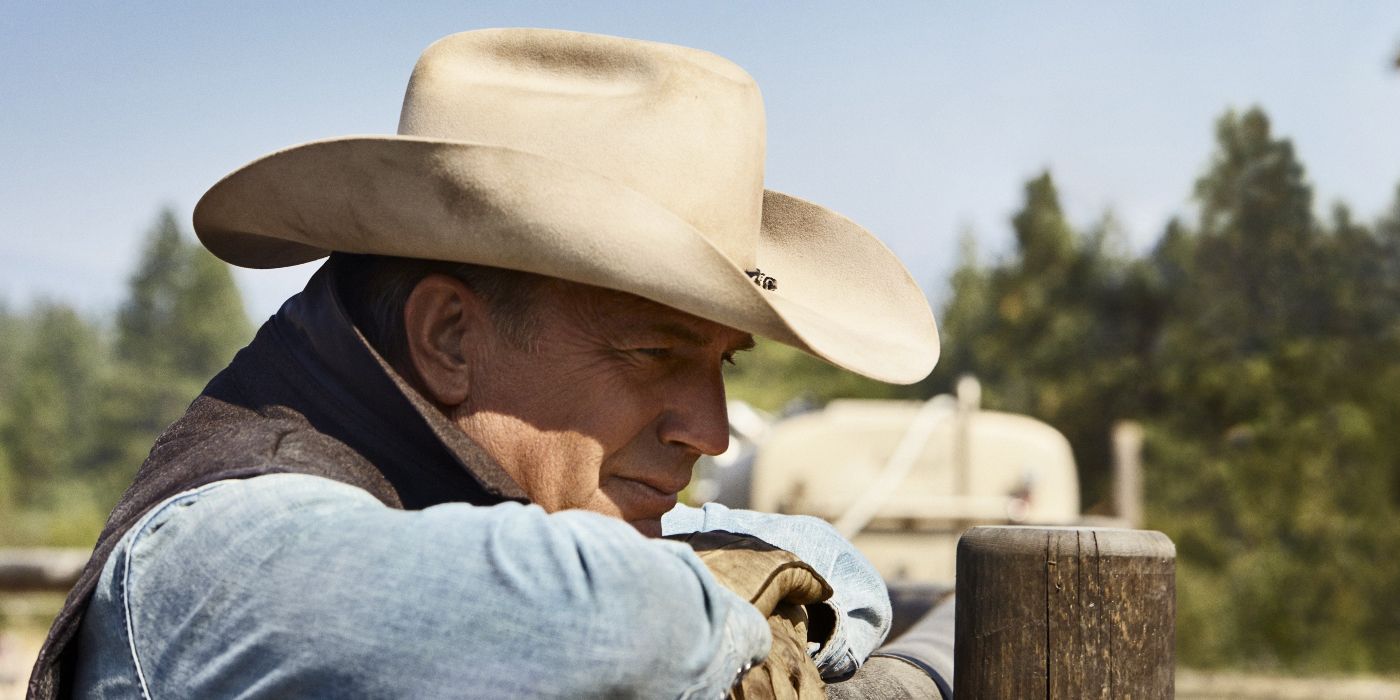
Yellowstone follows the Dutton family, who live and work on the titular ranch in Montana. It’s a vast piece of land, and the Duttons must survive on it in order to keep it. Yellowstone has a vivid setting, some unforgettable characters, and high-stakes drama, and they’re all reasons why the show was so popular during its original run. However, certain dramatic and moral ambiguities and less captivating storylines—like those below—can, when recognized repeatedly, feel like the harsh realities of rewatching Yellowstone.
6. The Sheer Repetitiveness of Conflict
Upon Rewatching, Much of the Surprise Is Gone
Upon rewatching, it’s really easy to notice these things and realize just how often the same basic conflicts cycle through. The “someone wants the land” plot repeats in various forms season after season, while the Jamie vs. family dynamic becomes toxic and contrived. Some people even have the uncanny ability to spot sequences and situations early on in the show that make it clear that a dramatic “rug pull,” so to say, is being planned. This was exciting at first, but a rewatch might reward viewers better if they observed the behavior of each character from the start, when they have some (or no) idea what might happen to them. Also, maybe we can predict the moment Kevin Costner decided to back out.
5. The Melodrama Becomes More Apparent
And Intense Family Conflict Feels More Exhausting
Because the family conflict often verges on melodrama, the initial watch carries tensions that propel us through each episode. Later, it becomes easier to recognize the shock value in the repeated clashes and emotional explosions, starting to feel draining at some point. The one thing that is interesting, despite being exhausting, is how often characters fall into cyclical behaviors. It is a negative thing, but it’s also a major sign of someone’s traits and characteristics. For example, John (Costner) needs to keep the ranch at all costs; Beth (Kelly Reilly) lashes out in rage and anger in almost every episode; Jamie (Wes Bentley) is constantly between Dutton loyalty and betrayal; Kayce (Luke Grimes) wants out and then comes back in, etc. This shows us that the characters don’t really learn anything from their situations and just continue mindlessly deepening the conflict and anger they have, making the melodrama suddenly feel all the more boring.
4. Character Inconsistencies and Stagnation
Their Growth (or Lack Thereof) Stands Out
Yes, the traits of each character are part of who they are and why each of them is liked or disliked, but at some point, we all wish for some more significant shifts in their behaviors and personalities, or at least some reflection on the consequences of their actions. With the full scope of a character’s journey in mind, their motivations and actions start to feel inconsistent or frustratingly stagnant when we sit down for a rewatch. I understand they probably don’t progress or learn anything because they are the Duttons, their father’s children, but there are always glimpses of breaking the cycle, then they’re gone. It can begin to feel like we’re watching a show about a bunch of unremorseful narcissists who enjoy killing anyone who steps on their ranch.
3. The Constant and Often Gratuitous Violence
Morally Gray Actions Become More Stark
One major part of why Yellowstone is so exciting is the action. The show doesn’t shy away from brutal gunfights and fistfights, beatings and intense demonstrations of power. The first viewing of the action feels exciting because the tension and momentum help overshadow the levels of brutality, meaning the goal justifies the means in Yellowstone a lot more than expected. One super exciting sequence is Kayce saving his kidnapped son, Tate, but the context of that is—a white supremacist group kidnapped his half-Native American son to exact revenge on John for not selling his land. Giving a child permanent trauma and PTSD is insane, but Kayce delivers a brutal revenge that feels proportional to the crime. This happens very often; sometimes the violence is justified, and you feel it deeply, while at other times, the overall brutality feels extreme, no matter who pulls the first move.
2. Pacing Issues Become Glaring
And So Do Plot Holes and Dropped Storylines
Many shows with more than a couple of seasons suffer from inconsistent pacing, which is okay if it’s done stylishly or with some flair. Yellowstone does it like that, though when watching for the first time, it doesn’t really matter too much if some episodes or even entire arcs move very slowly. When you know everything that happens in the show, though, the filler moments become slow-paced and boring, noticing that the more exciting parts or storylines tend to get rushed and become very abrupt. There’s nothing wrong with focusing on character interactions or ranch life, because Yellowstone should be about modern cowboys, but when those parts are created only as a side note or a filler, they just feel redundant. It’s a shame that the ranching life was put a bit to the side for the sake of thrills and politics, though it wouldn’t be much of a show without them.
1. The “Sheridan-isms” Can Feel Repetitive
Including the Glorification of Rugged Individualism
Taylor Sheridan has a distinctive writing style, and nothing’s wrong with that. Plenty of our favorite writers have a signature they use for their movies and shows, like Aaron Sorkin‘s fast-paced and quick-witted dialogues or Quentin Tarantino‘s storytelling character focus. Sheridan often uses intense, philosophical dialogue for his characters and writes specific character archetypes: the stoic cowboy, the fierce protector, and the conflicted politician. These can apply to almost every main character in Yellowstone. These things become more obvious with each rewatch and can begin to feel predictable the second time around. If you’re rewatching Yellowstone with someone who’s just getting into the lore, you’ll appreciate the performances and the cinematography and catch nuances you missed the first time, or it can annoy you that they’re very typical and even a bit unlikable.
